Drafting or Negotiating A Subcontract–Questions To Consider
June 21, 2021 —
David Adelstein - Florida Construction Legal UpdatesWhen it comes to drafting and negotiating a subcontract, there are provisions that should be important to you from a risk assessment standpoint. From the subcontractor’s standpoint, below are questions you should ask, or issues you should consider, as you go through the subcontract. These are the same questions and issues that are also important to a contractor as the contractor will want to ensure these issues are included in the subcontract. By asking yourself these questions, you can check to see how the subcontract addresses these issues, and how the risk should be negotiated. Hopefully, you are working with counsel to make sure you understand what risk you are assuming and those provisions you want to try to push back on. Asking yourself these questions, or considering these questions, will help you go through the subcontract with a purpose based on the risk profile of the project and certain risk you don’t want to assume.
- Prime Contract –> Does the subcontract incorporate the prime contract? Make sure to request the prime contract since the subcontract will identify the prime contract as part of the Subcontract Documents and will require you to assume towards the contractor the same obligations the contractor is required to assume towards the owner.
- Scope of Work –> What is the scope of work? Is it clear. Make sure the scope is clear and you understand the scope.
Read the court decisionRead the full story...Reprinted courtesy of
David Adelstein, Kirwin Norris, P.A.Mr. Adelstein may be contacted at
dma@kirwinnorris.com
20 Years of BHA at West Coast Casualty's CD Seminar: Chronicling BHA's Innovative Exhibits
May 03, 2018 —
Beverley BevenFlorez-CDJ STAFFThe Bert L. Howe & Associates, Inc., (BHA) exhibit has been a fixture at West Coast Casualty's Construction Defect Seminar since the mid-1990's. Through the years, BHA has updated their display, but no matter what year, you could count on the BHA exhibit to provide a not-to-be-missed experience.
2008-BHA's sleek, rear projection display includes a screen that promotes the firm's capabilities that can be seen throughout the exhibit hall. This would be one of many innovations BHA has brought to the West Coast Casualty seminar.
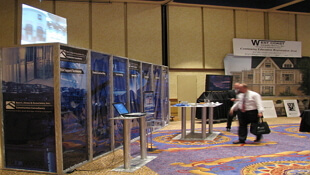
2009-With the success of the rear screen projection, BHA adds additional monitors to provide attendees with more information about BHA.
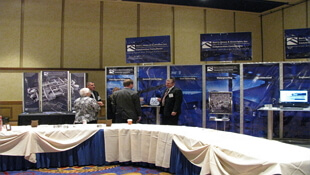
2010-BHA adds an interpretive professional development exhibit targeted to Building Envelope issues allowing adjusters and other non-construction professionals hands on access to the systems and components at the heart of many related such claims.



2011-BHA's Swing for Charity challenge is born.

2012-Always innovating, BHA expands its rear projection and professional development offerings to West Coast attendees.

2013-BHA showcases additional capabilities with a twenty-four foot, custom, convex, immersive video experience.

2014-BHA adds an iPhone display to give a hands-on demonstration of their data collection methods.
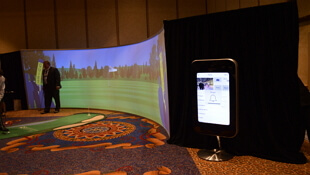
2015-BHA's twenty-four foot , custom, convex, immersive video experience was elevated with two additional rear projection screens, reflecting BHA's newest capabilities and services.

2016-BHA dazzles attendees with their new exhibit comprised of more than 15 integrated, high definition, LCD displays. iPads are stationed on tables to conveniently demonstrate BHA's data collection processes.
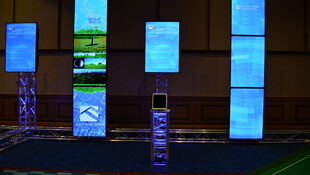
2017-BHA's Swing for Charity Golf Challenge raised $2,225.00 for the National Coalition for Homeless Veterans and $1,900 for Final Salute.
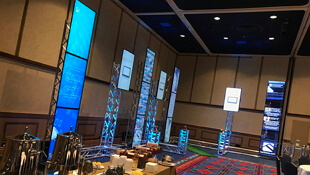
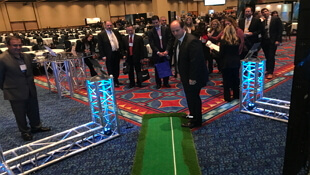
Read the court decisionRead the full story...Reprinted courtesy of
Construction Delayed by Discovery of Bones
June 28, 2011 —
CDJ STAFFWork stopped on a $7 million construction project in Oak Harbor, Washington, after three sets of Native American remains were found. The Washington State Department of Archaeology and Historic Preservation had suggested that the project employ an archaeologist. City, state, and tribal officials are determining what will happen next. The Seattle Times reports that Jim Slowik, Oak Harbor’s mayor, has asked for a review of why no archaeologist was part of the project.
Read the full story…
Read the court decisionRead the full story...Reprinted courtesy of
The World’s Largest 3D-Printed Neighborhood Is Here
March 20, 2023 —
Todd Woody - BloombergAmid the tech boom-fueled sprawl in Austin, Texas, Wolf Ranch at first appears to be another colorfully named but architecturally unimaginative suburban subdivision. Until, that is, you turn a corner and stumble across giant robots building homes resembling waves frozen in concrete.
This 100-house addition to the 2,500 homes planned for Wolf Ranch is called “the Genesis Collection,” and as the world’s largest 3D-printed community, it is indeed sui generis. A collaboration between Lennar Corp., the US’s second-biggest home builder, and 3D-printing startup Icon, Genesis represents perhaps the most significant innovation in residential construction in decades. If it can scale, 3D-printed construction promises to deliver energy-efficient homes that can be built faster and more affordably, in novel designs and with minimal waste. The concrete structures are also more resilient to increasingly intense climate-driven hurricanes, wildfires and heat waves.
“I think we'll look back and say this was a pretty pivotal moment in the history of construction,” says Jason Ballard, Icon’s cowboy hat-wearing co-founder and chief executive officer. “I do think 3D printing and robotic construction are necessary to end the global housing crisis.”
Read the court decisionRead the full story...Reprinted courtesy of
Todd Woody, Bloomberg
Sustainability Puts Down Roots in Real Estate
January 27, 2020 —
Stephanie Amaru - Gravel2Gavel Construction & Real Estate Law BlogSustainability has evolved from a passing trend or niche preference into an undeniable, growing driver of the real estate market. This is particularly true as millennials comprise an increasing proportion of the workforce, home-buying population, and individuals influencing the future of real estate development in the United States.
If anything illustrates the significance of younger generations’ increasing interest in sustainability, it is the Global Climate Strike that drew participation of many thousands of young people, with 2,500 events scheduled in over 150 countries. In New York City, 1.1 million public school students were excused from school to join the strike in an event planned to precede the UN Summit, which itself was intended to push countries toward a commitment to faster transition to renewable energy and stricter climate targets. While both policymakers and citizens of previous generations have been split on their willingness to address global climate change with urgency, younger generations are feeling a stronger sense of responsibility for curbing the world’s trajectory towards a climate catastrophe, which will be inherited by them and their children. This has manifested in action that promotes awareness of and political action with respect to these issues—such as the Global Climate Strike—as well as evolving habits and preferences in both consumer goods and real estate.
Greener Space
In recent years, real estate developers have recognized that there is a market for “greener” developments that reduce annual expenditures on buildings, whether it be through small spaces requiring less electricity and promoting energy efficiency, or through renewable energy options such as solar photovoltaic power. Some real estate developers have chosen to install these options themselves, while others seek out sustainable financing options to cover the costs of renewable energy. If installing renewable energy is too costly, real estate developers will seek out more cost-effective locations for their brick-and-mortar operations.
Read the court decisionRead the full story...Reprinted courtesy of
Stephanie Amaru, PillsburyMs. Amaru may be contacted at
stephanie.amaru@pillsburylaw.com
Kahana Feld Receives 2024 OCCDL Top Legal Organizations for DEI Award
September 30, 2024 —
Linda Carter - Kahana FeldIRVINE, CA – Sep. 12, 2024 – Kahana Feld is pleased to announce that the firm received the 2024 Top Legal Organizations for DEI Award from the Orange County Coalition for Diversity in the Law (OCCDL). The firm will be recognized at an awards gala at The Westin South Coast Plaza on October 3.
Each year, the OCCDL recognizes individuals and organizations who have advanced diversity, equity, and inclusion in the Orange County legal community, whether through their excellence in the law or their direct efforts to promote DEI. Kahana Feld was recognized for programs such as its DEI book club and its regular webinars on topics like implicit bias. The firm supports various DEI organizations and initiatives in the Orange County area, including the Orange County Asian American Bar Association, the Orange County Women Lawyers Association, and the Jewish Federation of Orange County.
The OCCDL is a collaborative effort of professionals from leading Orange County law firms and other community partners promoting the advancement of diverse attorneys in Orange County. The OCCDL partners with local schools and organizations to increase community involvement and provides education focused on diversity to students and attorneys.
Read the court decisionRead the full story...Reprinted courtesy of
Linda Carter, Kahana FeldMs. Carter may be contacted at
lcarter@kahanafeld.com
Quick Note: Notice of Contest of Claim Against Payment Bond
January 31, 2018 —
David Adelstein - Florida Construction Legal UpdatesOn private jobs where the general contractor has an unconditional payment bond, subcontractors, sub-subcontractors and suppliers need to serve a
notice of nonpayment to preserve payment bond rights.
Read the court decisionRead the full story...Reprinted courtesy of
David Adelstein, Florida Construction Legal UpdatesMr. Adelstein may be contacted at
dadelstein@gmail.com
Blackouts Require a New Look at Backup Power
April 06, 2020 —
John McBride - Construction ExecutiveRecent blackouts on both East and West coasts are causing commercial property owners to reassess their need for backup power. The likelihood of more-frequent blackouts means backup power must evolve from ensuring the safe exit of office workers to enabling core business functions to continue uninterrupted. That’s a major shift in preparedness that construction executives should consider in future planning.
In New York City on July 13, 2019, a Con Edison blackout left 72,000 customers in Manhattan and Queens without power primarily because of a flawed connection at an electrical substation. Eight days later, a second Con Edison blackout left more than 50,000 customers, mostly in Brooklyn, without power due to high usage during a heat wave. These events occurred even though, as Con Edison stated, the New York City grid is one of the most complex and technologically advanced in the world and contains multiple layers of redundancy.
In northern and central California in late October, 2019, intentional blackouts were implemented by Pacific Gas and Electric (PG&E) on a massive scale in response to out-of-control wildfires. “Never before in California history have more than 2 million people gone five days without electrical power because of the intentional safety policy of a utility,” reported the Los Angeles Times. It was the second massive blackout in California in two weeks, after PG&E had earlier shut off power to almost 2 million people in rolling blackouts.
The blackouts on both coasts are remarkable not only for their breadth but for the range of causes—from limiting wildfires sparked in part by faulty, above-ground, power lines to a flawed connection at a substation to overuse during a heat wave. The conditions creating those causes are not likely to subside, and Con Edison warned this summer of more service outages to come. In California, The Washington Post writes, “blackouts are redefining the prosperous state.”
Reprinted courtesy of
John McBride, Construction Executive, a publication of Associated Builders and Contractors. All rights reserved.
Read the court decisionRead the full story...Reprinted courtesy of




































































